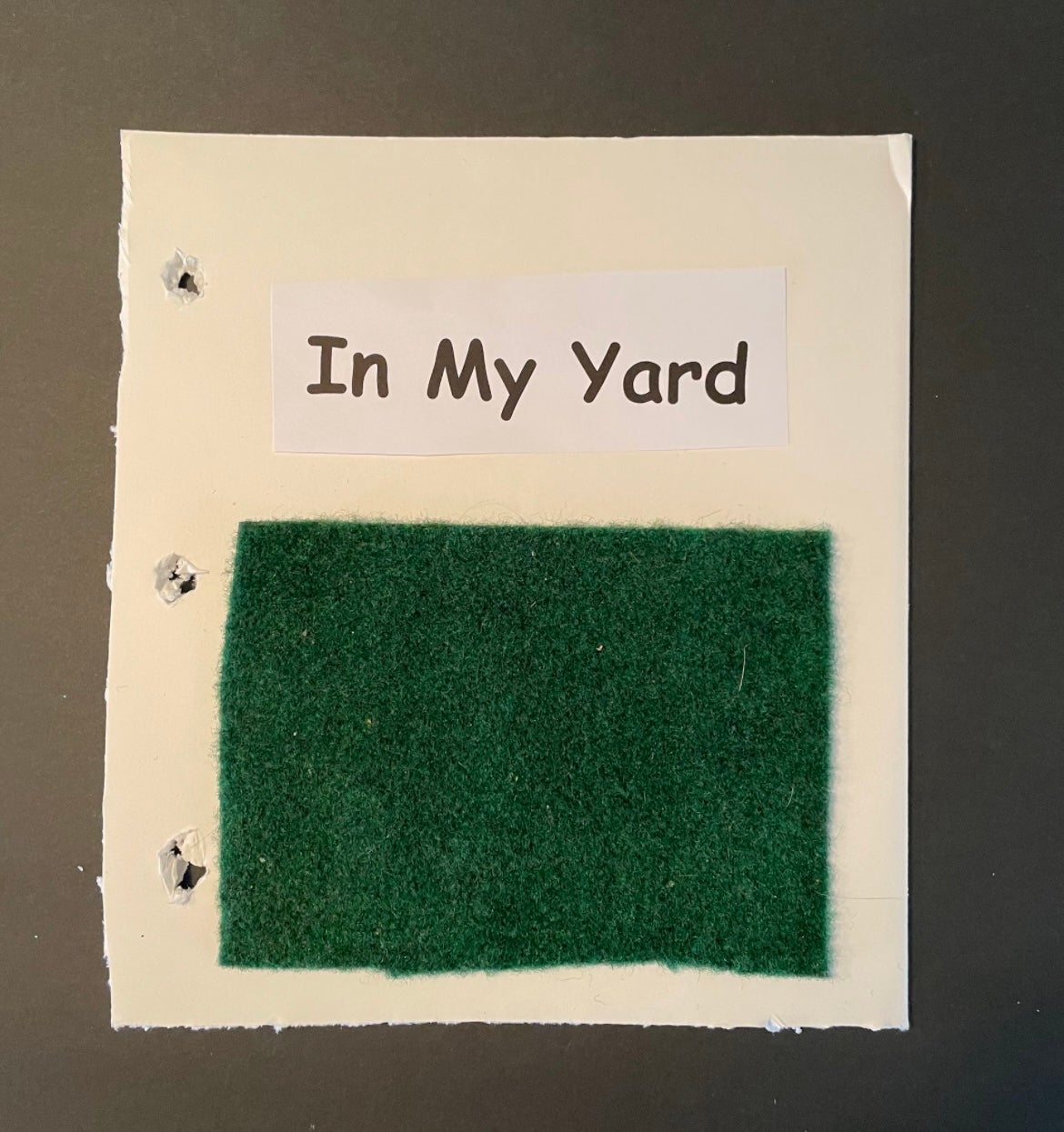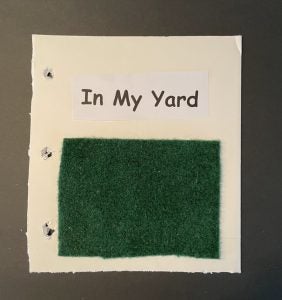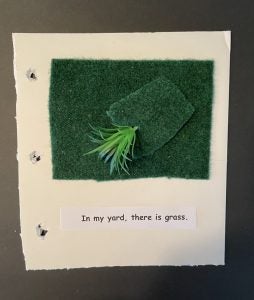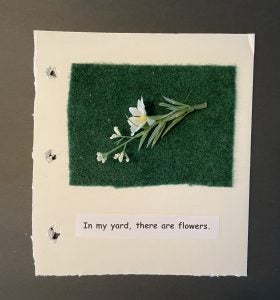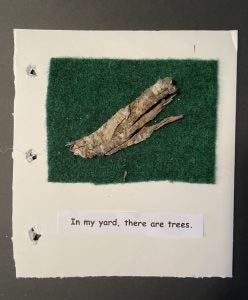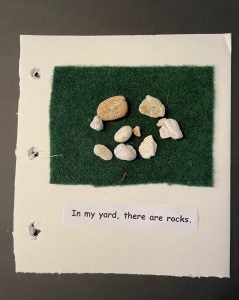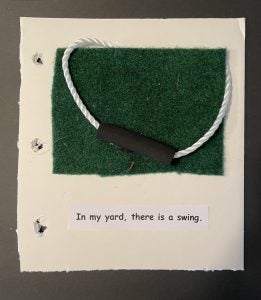We all like to revisit experiences we’ve had and share those memories with others. Experience books provide the chance to revisit and review life events, which in turn creates communication and literacy learning opportunities. The great thing about these books is that you can write them yourself based on the students’ interests and life experiences. The topic possibilities are numerous when you break down all of the life events throughout a learner’s day.
It’s important to know the learner, their activities, and their interests when creating a writing plan for an experience book. We all have different life situations. Students with DeafBlindness are no different. Therefore as we plan to make experience books, no two student books will necessarily be the same.
The following is an example of a book made for a pre-school child named Aubrey based on his favorite activity of playing in the yard. There are lots of things to explore in the yard and this student has some specific items that catch his attention when he’s outside. This book is based on those interest areas.
For the cover, a grass-like texture is used as the base for the book.
The first page displays a plastic version of grass.
This page displays flowers that are much like those in the child’s yard. Aubrey likes to pick the flowers from the ground when he goes outside with his mom.
Since Aubrey likes to touch the bark on the trees, this page displays a piece of bark from one of the trees.
In the flower garden, rock is used as a filler. Aubrey likes to pick up the rocks in the garden and explore them. This page displays rocks directly from that garden.
Aubrey has a swing that he loves to get on after he explores the yard. The rope and rubber textures are very similar to the textures on his backyard swing.
Materials Used:
- Foam board for book pages
- grassy material for background on each page
- plastic grass-like item
- faux flower
- tree bark
- rocks
- rope
- rubber tubing
- glue gun
- scissors
- hole punch
- metal rings to put book together
- text printed out
Remember that these books are created for individualized learner experiences. Be sure that items and sentences are based on specific experiences and preferences of the individual. Another child may play in the yard and have different textures and perspectives to consider. Another child may not have rock gardens but instead, have wood chips. Another child may have a playground-type slide instead of a swing. If that is so, you would want to use a texture that would represent what they would feel when they play in the yard. Adapt for visual and physical adaptations as needed for the learner to access the book pages.
This book was developed for a young child but this same idea could be used for an individual of any age. Do you have ideas to share with others? Please add them in the comment section below.
~Julie Brickhouse

